 W
WLeonid Nikolaievich Andreyev was a Russian playwright, novelist and short-story writer, who is considered to be a father of Expressionism in Russian literature. He is one of the most talented and prolific representatives of the Silver Age period. Andreyev's style combines elements of realist, naturalist, and symbolist schools in literature.
 W
WVoldemar Khristianovich Aussem, , was a Russian nobleman and Bolshevik, communist official and Soviet diplomat.
 W
WAleksei Yegorovich Badayev was a Soviet politician, functionary and a nominal head of state of the Russian Soviet Federative Socialist Republic during the leadership of Joseph Stalin.
 W
WMikhail Mikhailovich Bakhtin was a Russian philosopher, literary critic and scholar who worked on literary theory, ethics, and the philosophy of language. His writings, on a variety of subjects, inspired scholars working in a number of different traditions and in disciplines as diverse as literary criticism, history, philosophy, sociology, anthropology and psychology. Although Bakhtin was active in the debates on aesthetics and literature that took place in the Soviet Union in the 1920s, his distinctive position did not become well known until he was rediscovered by Russian scholars in the 1960s.
 W
WMikhail Aleksandrovich Bonch-Bruevich, sometimes spelled Bonch-Bruyevich, was a Russian engineer, scientist, and professor. Generally considered the leading authority on radio in Russia in the first decades of the 20th century, he greatly influenced the pre-radar development of radio-location in that nation.
 W
WAlexander Ksaverievich Bulatovich tonsured Father Antony was a Russian military officer, explorer of Africa, writer, hieromonk and the leader of the imiaslavie movement in Eastern Orthodox Christianity.
 W
WSergei Nikolaevich Bulgakov was a Russian Orthodox Christian theologian, philosopher, priest and economist.
 W
WAntoni Cejzik was a Polish athlete. He moved to Poland in 1924 as an eight-time Soviet champion in various athletics competitions and the Soviet record holder in decathlon.
 W
WNikolay Mikhailovich Chagin was a Russian architect active primarily in Vilnius and the Crimea. He took part in the Siege of Sevastopol and served as Vilno's main architect for 38 years. Chagin mastered the Byzantine Revival and several other revivalist styles, often blending them at will. His church buildings include:Nativity Cathedral, Riga Cathedral of the Theotokos, Vilnius St. Paraskeva Church, Vilnius St. Euphrosyne Church, Vilnius St. Catherine Church, Vilnius Bell tower of St. Anne's Church, Vilnius Jelgava Orthodox Cathedral St. Mary's Church, Grodno Church of the Resurrection, Foros The interiors of the Chersonesus Cathedral
 W
WNikolay Yakovlevich Danilevsky was a Russian Empire naturalist, economist, ethnologist, philosopher, historian and ideologue of Pan-Slavism and the Slavophile movement. He expounded a circular view of world history.
 W
WSergey Fyodorovich Durov was a Russian poet, translator, writer, and political activist. A member of the Petrashevsky Circle and later the leader of his own underground group of intellectuals, Durov was arrested in 1849, spent 8 months in the Petropavloskaya Fortress, followed by 4 years in Omsk prison.
 W
WNaum Gabo, born Naum Neemia Pevsner, was an influential sculptor, theorist, and key figure in Russia's post-Revolution avant-garde and the subsequent development of twentieth-century sculpture. His work combined geometric abstraction with a dynamic organization of form in small reliefs and constructions, monumental public sculpture and pioneering kinetic works that assimilated new materials such as nylon, wire, lucite and semi-transparent materials, glass and metal. Responding to the scientific and political revolutions of his age, Gabo led an eventful and peripatetic life, moving to Berlin, Paris, Oslo, Moscow, London, and finally the United States, and within the circles of the major avant-garde movements of the day, including Cubism, Futurism, Constructivism, the Bauhaus, de Stijl and the Abstraction-Création group. Two preoccupations, unique to Gabo, were his interest in representing negative space—"released from any closed volume" or mass—and time. He famously explored the former idea in his Linear Construction works (1942-1971)—used nylon filament to create voids or interior spaces as "concrete" as the elements of solid mass—and the latter in his pioneering work, Kinetic Sculpture (1920), often considered the first kinetic work of art.
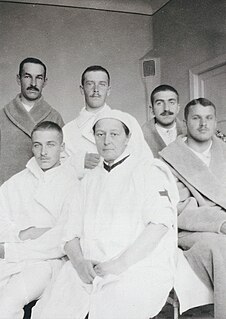 W
WPrincess Vera Ignatievna Gedroits was a Russian doctor of medicine and author. She was the first female military surgeon in Russia, the first female professor of surgery, and the first woman to serve as a physician in the Imperial Palace of Russia.
 W
WAleksandr Alekseyevich Golovachev was a Red Army colonel twice awarded the title Hero of the Soviet Union for his leadership of the 23rd Guards Motor Rifle Brigade of the 7th Guards Tank Corps of the Red Army during the World War II.
 W
WTimofey Nikolayevich Granovsky was a founder of mediaeval studies in the Russian Empire.
 W
WNikolai Mikhailovich Gusarov was a Soviet Air Force colonel and Hero of the Soviet Union. During World War II, Gusarov claimed at least 15 German aircraft shot down. He served with the 486th Fighter Aviation Regiment. He retired from the military in 1955 and worked in a ceramic factory until his death at the age of 61.
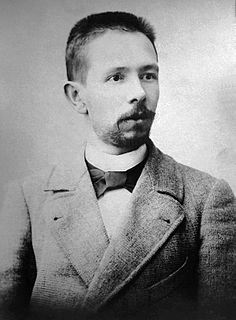 W
WVasily Sergeyevich Kalinnikov was a Russian composer. His body of work consists of two symphonies, several additional orchestral works, and numerous songs, all of them imbued with characteristics of folksong. His symphonies, particularly the First, were frequently performed in the early 20th century.
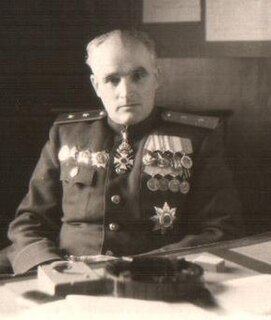 W
WAlexander Grigoryevich Kapitokhin was a Red Army Lieutenant general. Kapitokhin commanded a sector in the final defence of Sevastopol and was later the commander of the Soviet Airborne Troops (VDV). He was awarded the Order of Lenin and three Orders of the Red Banner.
 W
WIvan Semyonovich Kazakov (Russian: Иван Семёнович Казаков; was a Russian painter and graphic artist; residing in the Uzbek Soviet Socialist Republic.
 W
WNikolay Mikhailovich Kharlamov was a Soviet military leader and admiral.
 W
WTikhon Nikolayevich Khrennikov was a Russian and Soviet composer, pianist, and leader of the Union of Soviet Composers, who was also known for his political activities. He wrote three symphonies, four piano concertos, two violin concertos, two cello concertos, operas, operettas, ballets, chamber music, incidental music and film music.
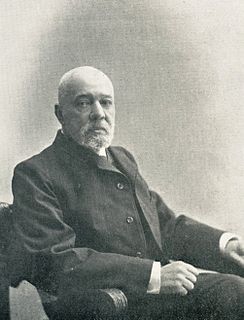 W
WVukol Mikhaylovich Lavrov was a Russian journalist, publisher, editor and translator.
 W
WNikolai Alexandrovich Melgunov was a Russian writer, publicist, translator from German and French, and music critic, described as one of the most prolific and diverse authors of his time.
 W
WAlexander Aleksandrovich Morozov was a Soviet designer of tanks, general, major-engineer (1945), and doctor of technical sciences (1972), twice Hero of the Socialist Labour. The member of the CPSU since 1943. Ended engineering technical school (1930). In 1931–1938 the head of group of CB of the plant, since 1938 the deputy head of CB, then head of CB and the deputy of the main designer of the construction factory, from 1940 he became main designer. The Morozov took part of the participation in development of the first domestic, T-24 (1930) medium tank, and also the wheel-caterpillar BT-2 (1931), BT-5 (1932), BT-7 (1935) and BT-7M (1939)light tanks. BT tanks along with T-26 constituted the basis of the tank arm of Soviet Armies. As the technical lead of the project together with M. I. Koshkin and N. A. Kucherenko headed development of the medium T-34 tank in 1940. During the Great Patriotic War, he was the chief designer of upgrades of the T-34 tank, which was recognized as the best tank of the period of the Second World War. After the war, under the direction of Morozov, a number of new types of tanks, etc. was created. The Deputy of Supreme Council of the USSR of the 5th convocation awarded state awards of the USSR and Lenin's award (1967) to Morozov. He was awarded 3 Orders of Lenin, an award of the October Revolution, the Orders of Kutuzov of the 1st degree, Order of Suvorov of the 2nd degree, 3 awards of the Labour Red Banner, an award of the Red Star, and other medals.
 W
WVasily Dmitrievich Myachin was a Soviet Army colonel and a Hero of the Soviet Union. Myachin was awarded the title Hero of the Soviet Union for his leadership of a battalion during the Berlin Offensive. Postwar, Myachin continued to serve in the army, retiring in 1978, after which he worked as an air traffic controller.
 W
WGeorgy Mikhailovich Parshin was an Il-2 pilot in the Soviet Air Forces during the Second World War who was twice awarded the title Hero of the Soviet Union. He went on to become a test pilot after the war, but was killed in a plane crash ten years later.
Ivan Fyodorovich Pereverzev was a Soviet actor. He appeared in 47 films between 1940 and 1977. He was awarded with the People's Artist of the Soviet Union (1975).
 W
WAleksander Ivanovich Pisarev was a Russian playwright, translator and theatre critic.
 W
WDmitry Ivanovich Pisarev was a Russian literary and social critic, journalist, and cultural philosopher who was a central figure of the Russian nihilist movement. Elements of his philosophy have been cited as forerunners of Nietzschean ideas, and his advocacy of liberation movements and natural science had significant impact on Russian development.
 W
WNikolai Nikolaevich Polikarpov was a Soviet aeronautical engineer and aircraft designer, known as the "King of Fighters". He designed the I-15 series of fighters, and the I-16 Ishak "Little Donkey" fighter.
 W
WYevgeni Alekseyevich Preobrazhensky was a Russian revolutionary, economist and sociologist. A member of the governing Central Committee of the Bolshevik faction and its successor, the All-Union Communist Party, Preobrazhensky is remembered as a leading voice for the rapid industrialisation of peasant Russia through a concentration on state-owned heavy industry.
 W
WMikhail Mikhailovich Prishvin was a Russian/Soviet writer.
 W
WEvgeny Kirillovich Rapp was a Russian writer, journalist and editor.
 W
WGeorgy Semyonovich Rodin was a Red Army lieutenant general. Rodin fought in World War I as a non-commissioned officer of the Imperial Russian Army. He joined the Red Army in 1918 and became an officer, fighting in the Russian Civil War. In 1938, he was transferred to the reserve but returned to active duty in 1939 and led a tank battalion in the Soviet invasion of Poland. Rodin led a tank regiment in the Winter War and became commander of a brigade in December 1940. The brigade became the 47th Tank Division in March 1941.
 W
WNikolay Ivanovich Rodin was a Soviet Air Force colonel and Hero of the Soviet Union. Rodin was awarded the title for reportedly making 110 attack sorties in World War II between November 1943 and April 1945. Postwar, he continued to serve in the Soviet Air Force before a 1978 retirement. Rodin lived in Leningrad/St. Petersburg and died in 2002.
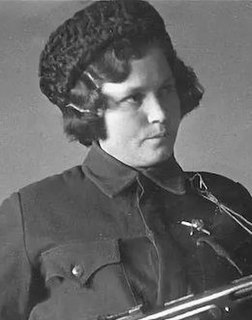 W
WValentina Ivanovna Safronova was a Soviet partisan and intelligence officer who engaged in reconnaissance and sabotage until she was captured and killed by the Gestapo. On 8 May 1965, over twenty years after her death, she was posthumously awarded the title Hero of the Soviet Union.
 W
WAleksey Grigoryevich Stakhanov was a Russian Soviet miner, Hero of Socialist Labor (1970), and a member of the CPSU (1936). He became a celebrity in 1935 as part of what became known as the Stakhanovite movement – a campaign intended to increase worker productivity and to demonstrate the superiority of the socialist economic system.
 W
WMikhail Aleksandrovich Stakhovich was a Russian politician.
 W
WTheophan the Recluse, also known as Theophan Zatvornik or Theophanes the Recluse, is a well-known saint in the Russian Orthodox Church.
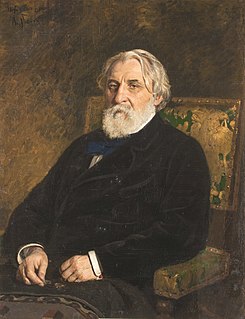 W
WIvan Sergeyevich Turgenev was a Russian novelist, short story writer, poet, playwright, translator and popularizer of Russian literature in the West.
 W
WNadezhda Andreevna Udaltsova was a Russian avant-garde artist, painter and teacher.
Rozalia Vynnychenko was a spouse of Ukrainian political leader Volodymyr Vynnychenko.
 W
WAndrei Medardovich Zayonchkovsky commanded the defence of the Romanian-Bulgarian border in Dobruja upon Romania's entry into World War I in August 1916.